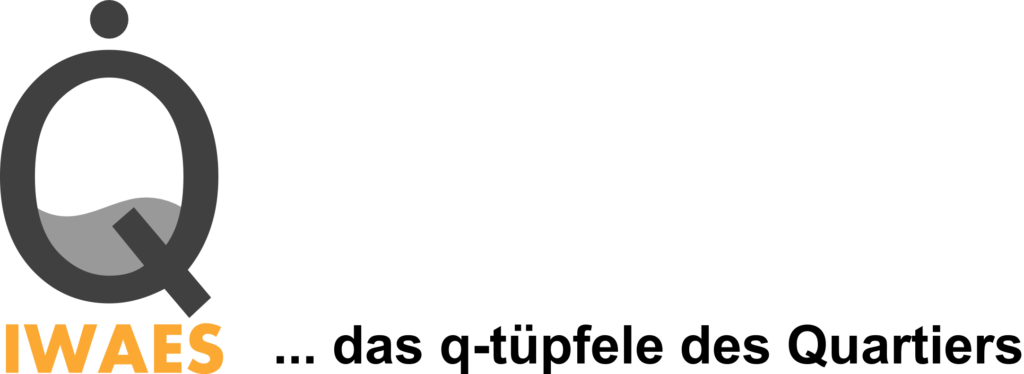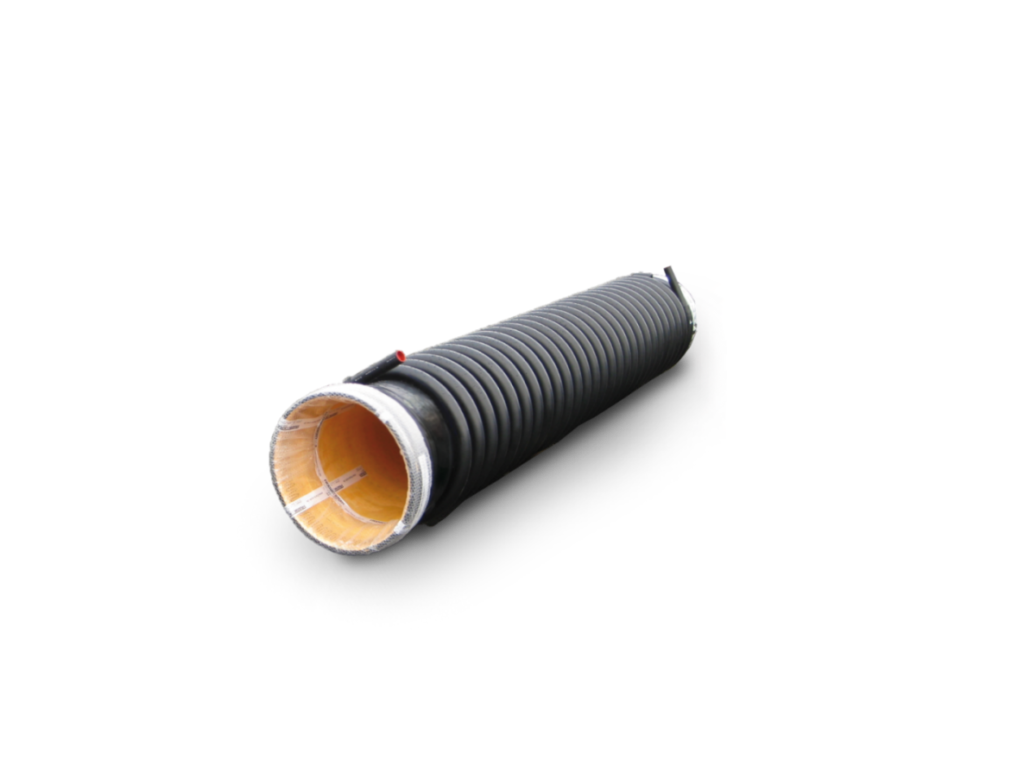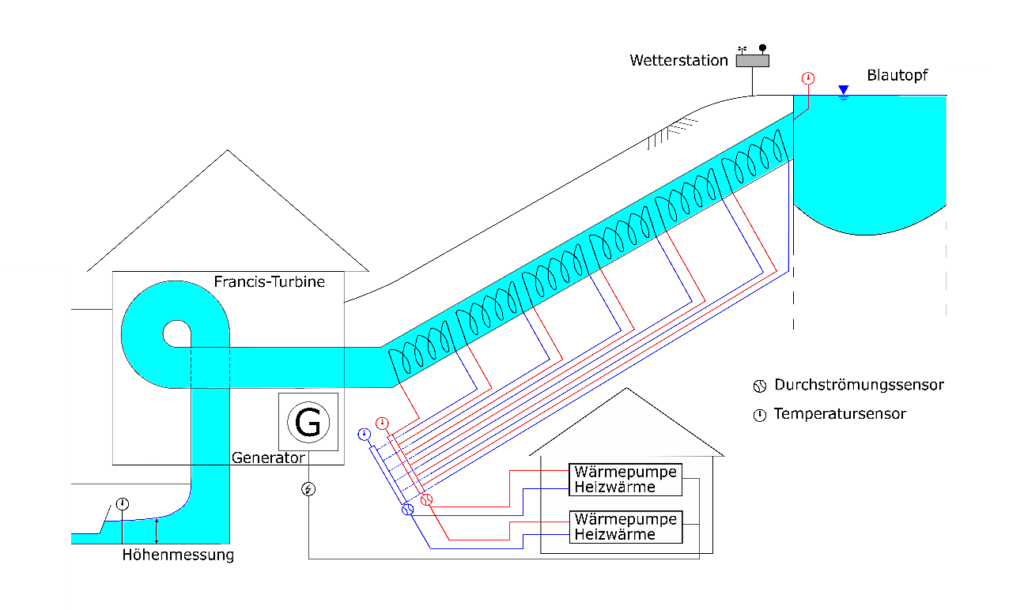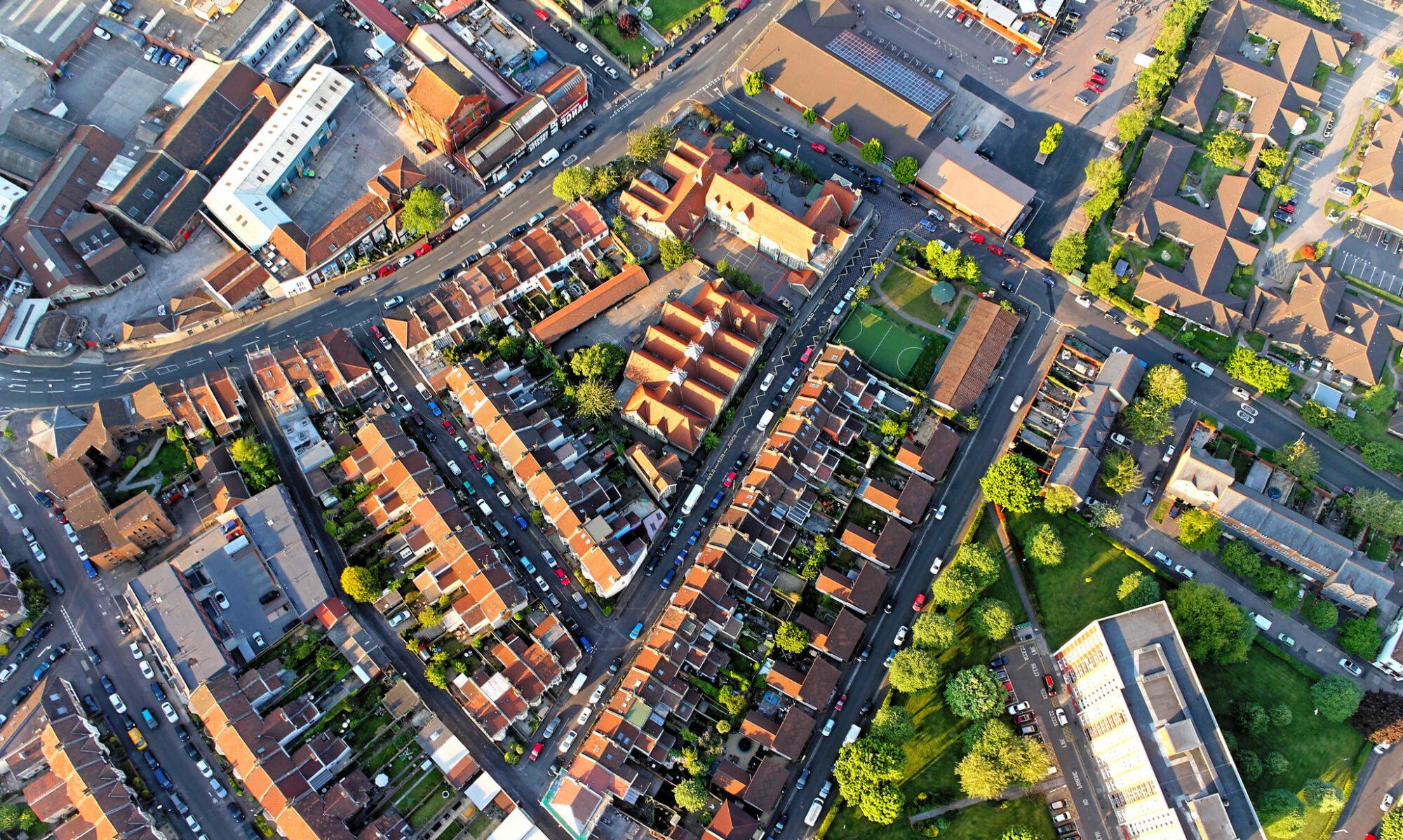IWAES II –
Integrative Consideration of Sustainable Heat Management of Urban Quarters

Almost 30 % of Germany’s primary energy consumption – mostly fossil sources – is used for the thermal supply of buildings. IWAES starts here and uses thermally activated sewers for the thermal supply of an urban district, which act in combination as a heat sink and source as well as a heat network between the users. The approaches to dimensioning and implementation that have been developed theoretically so far are now being tested in real laboratories and dimensioning aids are being derived using the advanced simulation model. Furthermore, the concept is transferred to other quarter structures and the application is demonstrated for representative model quarters.
Motivation
The currently acute ecological, economic and security challenges in energy supply highlight the urgency of using local, regenerative energy sources in the course of the necessary heat turnaround. Furthermore, cooling management is becoming increasingly important as a result of climate change.
One component for achieving these goals is the use of wastewater thermal energy. This offers the advantage of being able to provide both heating and cooling by thermally activating a per se existing infrastructure.
The thermal activation of sewers and the resulting hybrid use is economically and ecologically advantageous and also allows the realisation of a heat balance in urban quarters by means of additionally installed pipes. The dimensioning of the “hybrid channel” using multi-physical simulation models as well as the energy management planning required for the quarter concept have so far only been carried out theoretically, so that validation on the basis of real-scale applications accompanied by measurement technology has not yet been carried out.

In the second phase of the project, pilot plants will therefore be planned and realised that will enable detailed metrological monitoring and, on this basis, validation of the numerical simulation model developed in the project phase.
One of the biggest obstacles to the implementation of heating networks is their integration into urban heating network concepts. This requires the (further) development of operator models that support a broad application of the hybrid channel concept. Furthermore, the acceptance of the hybrid channel concept plays a decisive role in whether it is used for heat and cold generation in the neighbourhood. For this purpose, different models of approaching owners will be examined, such as convincing stakeholders of the advantages of connecting to heating networks with hybrid ducts.
Hybrid sewer concept – technical and urban planning aspects
In the first funding phase, the concept of a thermal interconnection network was developed, which makes it possible to distribute thermal energy between users with different needs via the sewer infrastructure and to extract or supply heat and cold from the wastewater and the surrounding soil. The central element here is the ‘hybrid channel’, the layout of which was optimised in the course of the project. Numerical simulations were carried out for the optimised hybrid sewer, enabling statements to be made about its thermal performance. The boundary conditions were determined from independently conducted measurements of the channel climate as well as through research. The simulations show that up to 15 % of the thermal demand of a city quarter could be obtained purely from wastewater heat. In addition, existing formal and informal planning instruments were examined with regard to their suitability for integrating the hybrid sewer concept. All findings were summarised in an action guideline, which allows stakeholders to easily implement the concept.
Increased acceptance through validated design aids
From a technical point of view, the follow-up phase serves to validate the methods and approaches developed in the first phase. For this purpose, the hybrid channel is tested under real experimental conditions in real laboratories and all relevant parameters are measured. Figure 2 shows one of the pilot plants. These measurement data are used for validation and, if necessary, further development of the numerical simulation model. Parameter studies are then carried out with the models validated in this way, which serve as the basis for a design approach.

In terms of urban development, operator models for heat networks with hybrid ducts and concepts for increasing the acceptance of the implementation of the concept in urban neighbourhoods are developed. The updated technical and urban development concepts will be applied to selected model projects with representative quarter structures and typologies.
On this basis, the hybrid sewer concept will be transferred to other neighbourhood typologies. In the course of this, in addition to the dimensioning of the sewer networks, the dimensioning of the hybrid sewers and the network planning, the energy management planning as well as the operator models to be developed and the owner approaches will be tested on real urban quarters that are currently being implemented, checked for implementation obstacles and optimised. The manual already created in the first phase will then be expanded or modified to take these new findings into account.
Project title
IWAES II – Integrative Consideration of Sustainable Heat Management of Urban Quarters
Internet
iwaes.de
Duration
01.11.2022–30.09.2024
Funding code
033W106AN
Funding
450.000 €
Contact
Univ.-Prof. Dr. -Ing. habil. Christian Moormann
Universität Stuttgart
0711 685-62437
christian.moormann@igs.uni-stuttgart.de
Project partners
Institut für Geotechnik, Universität Stuttgart
Institut für Gebäude- und Energiesysteme, Hochschule Biberach
Lehrstuhl für Städteplanung, Rheinland-Pfälzische Technische Universität Kaiserslautern
Amt für Umwelt, Landeshauptstadt Stuttgart
FRANK GmbH
Version of
Mai 2023
Information on the first funding phase (2019 – 2022) can be found here
Results
Results of the second funding phase
Results of the first funding phase
Results of 2019 – 2021 –
Contribution to the publication of the results of the first funding phase Quartiersansatz auf Basis thermisch aktivierter Abwasserkanäle
Results of 2021 – Contribution to the RES:Z-Newsletter 3: Thermische Aktivierung von “Sowieso-Infrastrukturen”
Results of 2020 – Contribution to the RES:Z-Newsletter 2: Thermische Aktivierung vorhandener Infrastrukturen
Results of 2019 – Contribution to the RES:Z-Newsletter 1: Wärmebewirtschaftung und Speicherung im Stadtquartier
Publications
Corinna Schittenhelm, Meinhard Ryba, Till Kugler, Roland Koenigsdorff, Detlef Kurth, Christian Moormann: Nachhaltige Wärme- und Kältebewirtschaftung von Stadtquartieren Integrierte Betrachtung im Stadtentwicklungsprozess. Transforming Cities 4 (2020), S. 52-57. (link)


